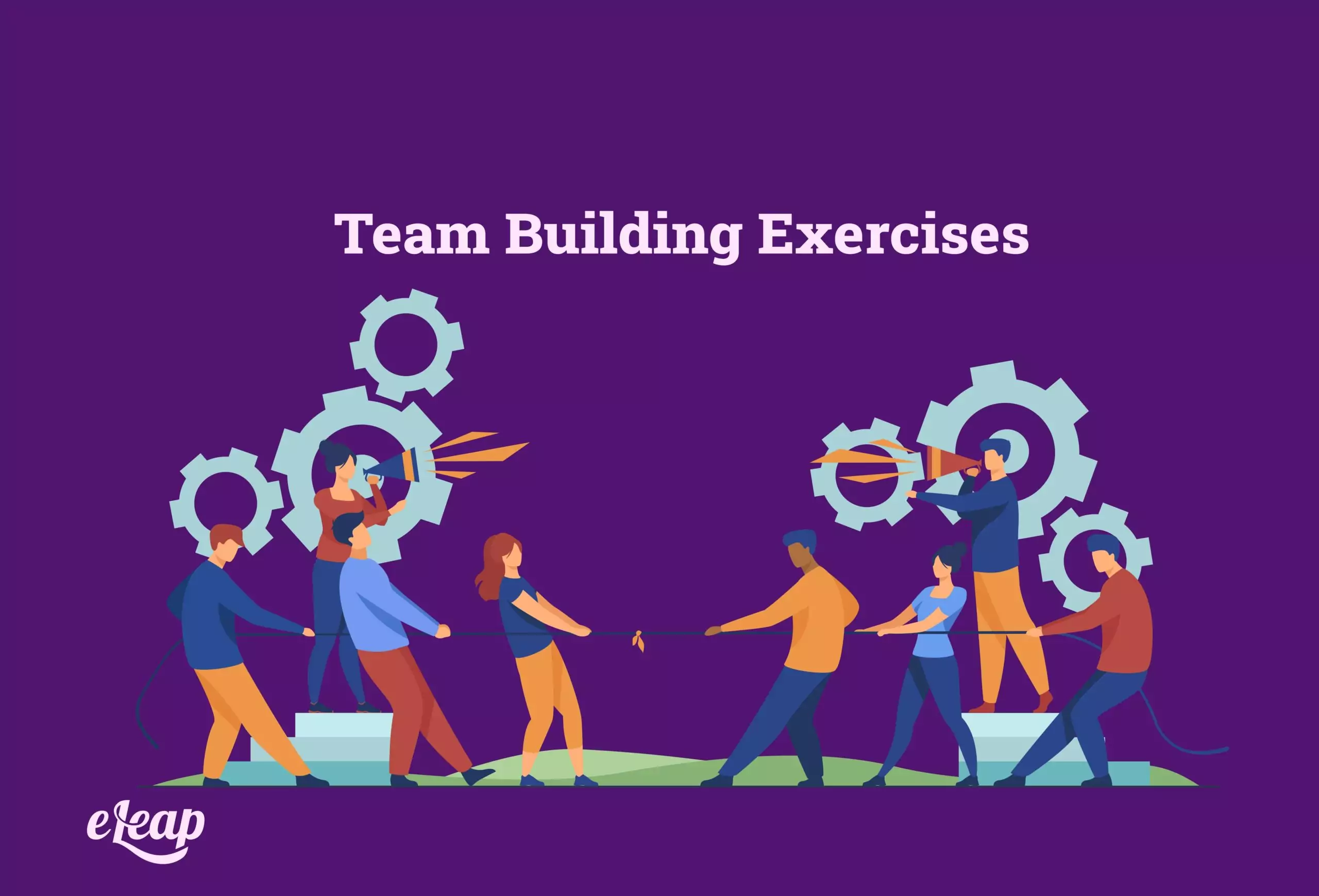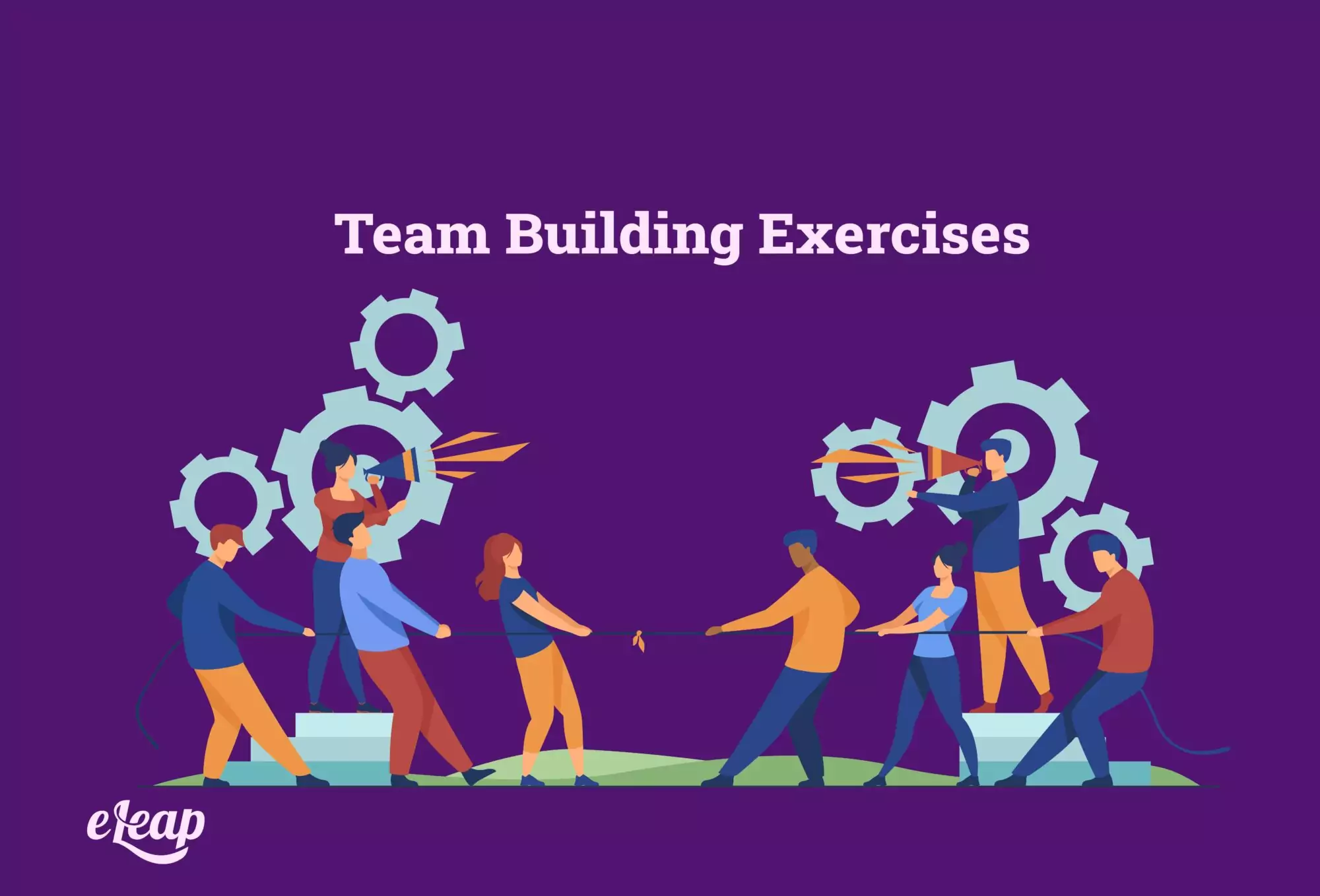Team Building Exercises
Invest in your team by building their strength

Whether you are in charge of a workplace team, a student group, or a volunteer organization, having team morale and group involvement is key to successful ventures.
As a leader, it can feel overwhelming to take on the task of creating a safe, healthy space in which to develop these relationships and build trust amongst members. An easy, fun, virtually free way to do this is by team building exercises.

Team building exercises range from short, quick activities that can be done either in person or online to long-term group goals that everyone encourages each other in achieving.
Exercises can be share-type (where people talk about their personal lives, goals, or funny experiences), problem-solving (in which the team is presented with a situation and they must think critically about how to solve it), puzzle oriented (where the group has to work together to complete an obstacle or game), or growth-related (during which team members will encourage and support each other toward a pre-set goal).
We detail the benefits of team building exercises and hurdles to overcome, and also gives an extensive list of example exercises to spark ideas for your team.
Read on to learn how you can implement these ideas into your workplace, office, or team.
Benefits of Team Building Exercises
Bringing people together to share about themselves, learn what they might have in common with each other, and to solve problems allows people to humanize their peers, see others’ skills and strengths, and learn from one another.
When people develop relationships, they communicate with one another better and work toward a goal together more easily.
Team building exercises also encourage positive feelings around the workplace or office, which means greater productivity and a higher level of positive feelings surrounding the organization.
When people feel that they are a part of a team, they want to stay on board for longer and have more motivation to do well.
Hurdles to Overcome
Many people are not invested in team building exercises, as they are used to working independently. Others see it as a waste of time or lack the social skills necessary to find enjoyment and benefit in these activities. However, with the right management style, solid communication, and modeling of the leaders, most employees or team members will eventually come around.
It can also be hard to find the time for another office activity, especially if you incorporate these exercises often.
Since so many people are working from home nowadays, too, bringing everyone together when they are ‘logging in’ at different hours can be difficult.
Again, though, with good communication and solid expectations, the team will eventually find these team building exercises to be part of the job—and a beneficial one at that.
Team Building Exercises That Can Be Done “Individually”
Some exercises are more effective if each team member is briefed in advance, prepares their presentation or idea beforehand, and then the group shares together. Here are a few ideas of exercises that work this way, if that is best for your group.
Recycle for Office Usefulness
(Breakdown: Group video, 15-30 minutes, high-level prep, team members use items from home, small-medium team size, mid-level impact)
In this activity, instruct team members to create something useful or helpful for the office made out of recycled materials from their home. They can use old cardboard, empty jars, scrap paper, the sky is the limit! Set a time for sharing and presentations.
This encourages people to think outside the box and gives a bit of a lighthearted feel so that members can share without being in a high-pressure situation.
Team Pen Pals
(Breakdown: Email or paper mail, about 5-15 minutes weekly for members, low-level prep, email or stationery, small-medium team size, mid-level impact)
Match team members with a pen pal either completely randomly or based on common interests, smaller teams, etc. You can also switch up pen pals after a certain amount of time. People can email or mail traditional letters, and can write about anything, work related or not! Members could even send cute cards or small gifts.
This could be a fun way to develop deeper relationships over time. Everyone loves mail that isn’t boring! Being ‘thought of’ makes people feel valued and important.
Group Arts and Crafts
(Breakdown: Group video, 15-30 minutes, low-level prep, team members use items from home, small-medium team size, mid-level impact)
Come up with an idea for a group craft project (for example, a mosaic, a large quilt, or a multi-piece mural). Give each employee or team member specific dimensions and basic instructions, then let them create to their heart’s content! Set a time for turn-in, and then get together to show off the final project.
Team building exercises where everyone can see that the sum of parts is more than the whole help encourage productivity and make everyone realize that working together can often be much more beneficial than keeping work independent.
Engaging Online Activities
In today’s climate, many people are working remotely or virtually. Creating a team atmosphere and building relationships can be even more difficult in these situations; however, there are plenty of team building exercises that only take a few minutes and can be done during the time before and/or after required whole group meetings.
eLeaP has many ideas, some of which are detailed below.
Game Show Fun
(Breakdown: Group video, 30 minutes-2 hours, low-level prep, leader collection of materials/questions, small team size, high-level impact)
Team members answer questions in a quiz-show style, collecting points and encouraging each other. This could be done as simply or extravagantly as works well for the team. Play with questions related to the team or project that is currently happening, or just random pop culture knowledge.
Bringing out a sense of competition in a team is a fun and exciting way to get some camaraderie going. Rewards could be given, or a team could simply play for pride.
Drawful
(Breakdown: Group video plus Jackbox platform, 15-20 minutes, low-level prep, small team size, mid-level impact, $9.99 cost for the organizer)
This is a fun, Pictionary-style game played online with people in their own homes and connected over a television or computer. Each player gets a different prompt to draw something on their device without being able to erase! Then others have to fit a title to the obscure drawing.
This game is sure to elicit plenty of laughs, which is a great way to build trust and relationships among any group of people.
Totem
(Breakdown: Group video plus Totem Team platform, 30 minutes-2 hours, low-level prep, small team size, mid-level impact)
Each team member will draw a personification of themselves as an animal, representing their strengths and skills. Then they detail out those skills and the rest of the team describes how those positive qualities will benefit the team as a whole.
This is an activity that leaves everyone feeling confident and good about themselves, which is a great way to build morale and get people working hard because they know they are valued.
Large Group Team Building Exercises
Very often, team building exercises are best used with small groups so that people can listen to each other and share without having to take up a huge time chunk. There are plenty of options, though, that work very well for large groups.
Come Into My Crib
(Breakdown: Group video, 30-60 minutes, low-level prep, large team size, mid-level impact)
The team leader should explain this activity to the whole group and assign a different day/time to each team member. Alternatively, each member could prepare a video and then send it in, and they will be shown in turn. The team members will take a video introducing everyone else to their home, detailing for example where they like to relax, their favorite kitchen gadget, or their backyard relax set up.
This brings a human element to every member of the team; when we can see where others live and how they spend their time, it helps us understand more about who they are on a deeper level, which allows people to work together more effectively.
Silly Selfies
(Breakdown: Group video, 30-60 minutes, low-level prep, large team size, mid-level impact)
In this team building exercise, instruct each employee or team member to take a silly selfie and upload it with a caption to the desired platform. Then other team members can view the pictures and add captions of their own. Afterward, create a guessing game around which captions were the real ones and which were made up.
When people are given the opportunity to ‘let their hair down’ a bit, it allows everyone to view their team members in a fun, light-hearted way. This can help people work together well by not having to take each other so seriously, knowing that we all want to have positive experiences.
Creating a Culture
Team building exercises that are well-executed and that take place consistently can help ensure an environment that is built around positivity, respect, trust, and fun. These qualities make people want to come to work and encourage high productivity and emotional investment in the team as a whole. Build a culture that fosters team cohesiveness.